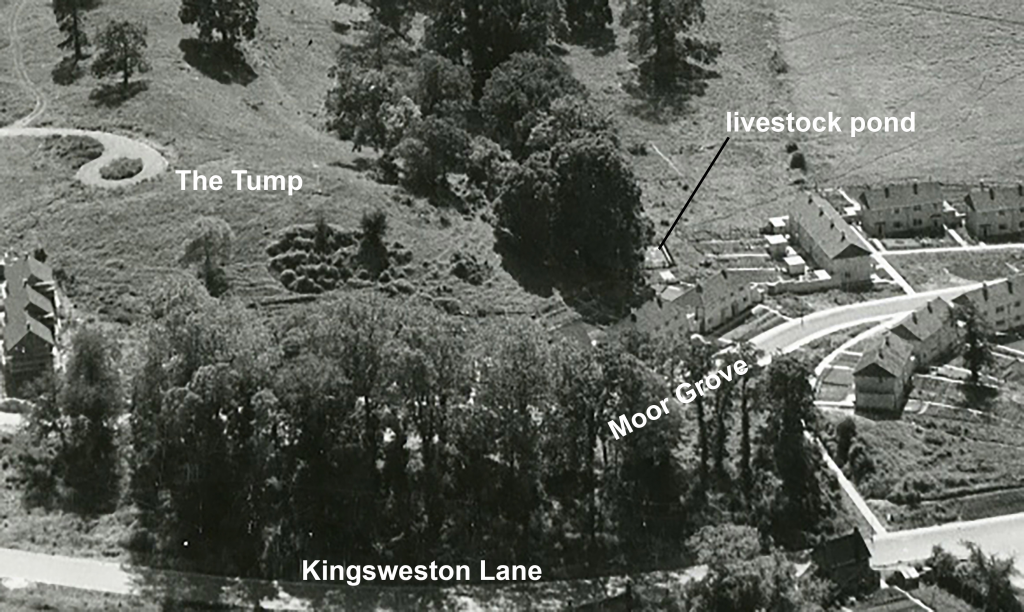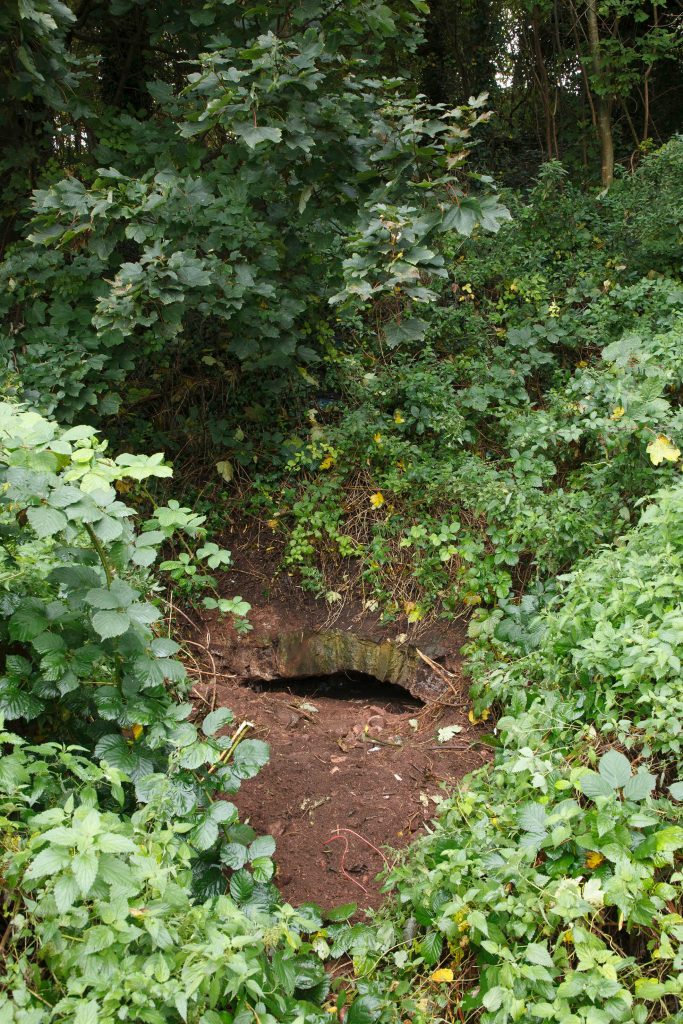Long ago, when we were first exploring the historic sites around the estate a feature came to our attention on a map of 1772. It was drawn on an estate survey by Isaac Taylor, drawn in 1772 and now part of Bristol Archives collections. A detail showed a rectangular shape, that we knew from later maps was a cattle pond, and a dark square feature shown excavated back into the slope of The Tump nearby. Again, looking at later maps this was marked as a well by the 20th century but its appearance on the Georgian plan raised the question whether it had begun as an ornamental feature in the landscaped grounds.
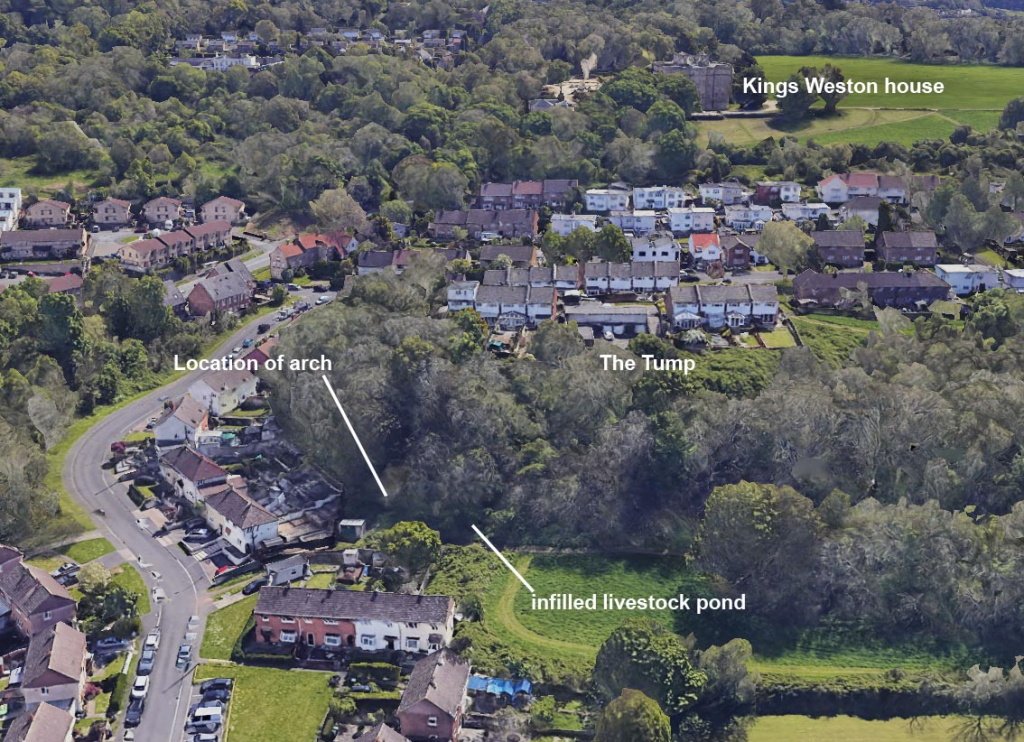
Back in 2011, when we were first aware of it, we searched the whole area in vain. The cattle pond remains broadly traceable alongside the path from modern day Moor Grove, but any remails of the other feature completely eluded us. When we returned to the area as part of research for last month’s newsletter we noticed something in the bank that we’d missed before: a low stone arch. We knew from an entry on the city’s Historic Environment Record that an arch existed close by, it had been reported as roman in origin, though was quickly established to be more recent, described as an “18-19th century spring head”. This corresponded with the feature we now saw on The Tump, and with the date of the Taylor plan. With the location now identified we set out to uncover what the arch was from. We undertook some superficial clearance of some of the undergrowth around the arch and excavated either side to establish how wide it was. The arch is irregular in shape, and roughly built. As found its crown was clear of the ground surface by about 20cm, but using a torch it clearly extended backward under the bank. When surveyed it transpired that it went back 1.7m under ground, ending in a flat rear wall.
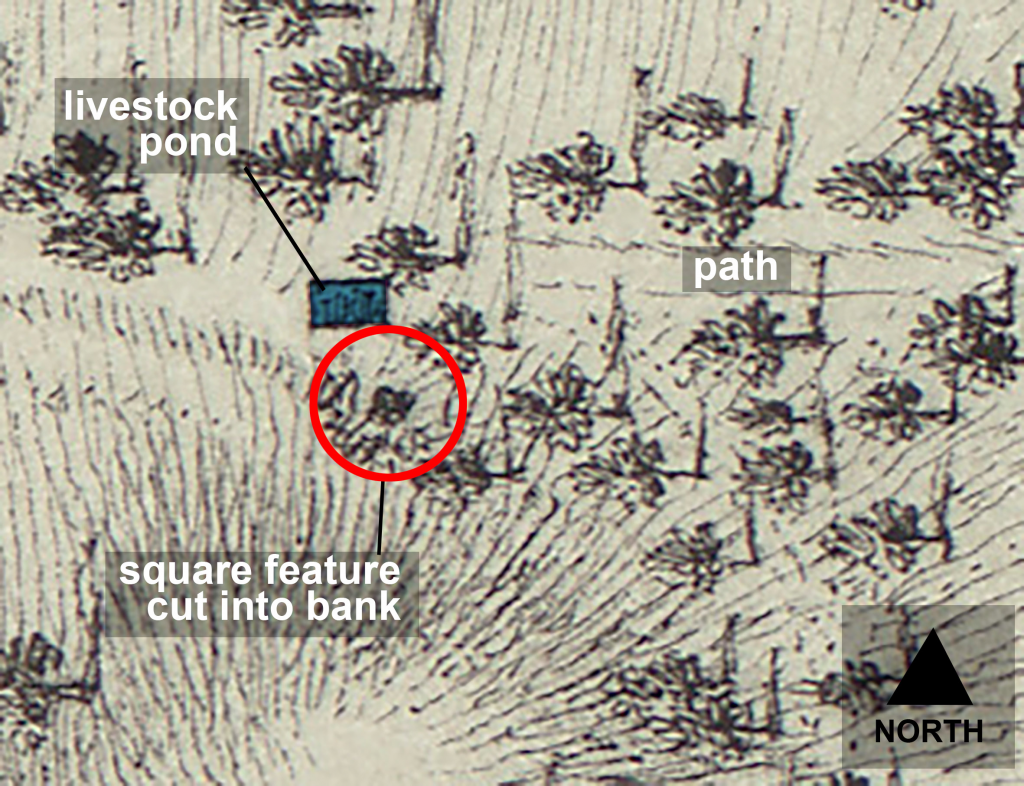
Cutting back either side revealed the arch was shallow, springing from two side walls 1.34m apart. The front sections of these walls, and the arch itself, were rough, indicating that they had been broken away with portions demolished. The mortar holding the arch together contained lumps of ash and was white in colour, indicative of an early-mid 19th century date. The mortar of the walls appeared yellow and of different, earlier date. With the general dimensions of the remains established we sought to find out how far the structure once extended out from the hill, and where it terminated below ground. Digging down on one side the infill was loose rubble, so loose large lumps could be easily lifted out by hand. At a depth of 47cm below the springing of the arch there was a clear pool of water!
Something new for KWAG, we’ve utilised new freely available new photogrammetry technology to create a 3D model of the arch and cistern as excavated. To explore it for yourself follow this link:
Spring head at The Tump, Kings Weston, Bristol – Download Free 3D Model on Polycam

Unfortunately, further excavations weren’t possible, but the exercise established a lot about the feature, its function and fate. It was clear that it wasn’t a garden feature, but a practical one. As suggested by the Historic Environment Record, it looks to be a natural spring that had a cistern built around it to collect water; this waster was used to feed the livestock pond just a short way downhill to the west. The 1772 estate plan may show an open cistern dug into the side of the hill. It appears that this had a vaulted roof constructed over it at a slightly later date, and from its location it would otherwise have risked filling up with silt washing off the hill. The irregular shape of the exposed edge of the arch represents a square aperture, an inspection hole or hatch, that would account for it being described as a well on later maps, despite having a very shallow water level and not being dug down in the traditional manner.
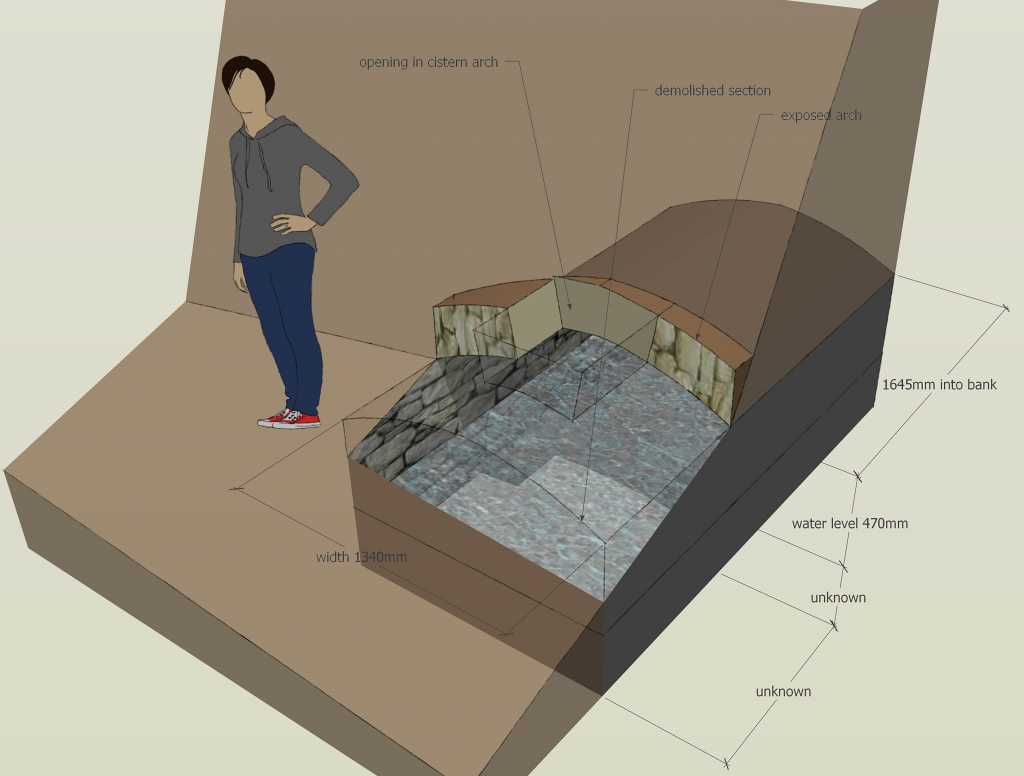
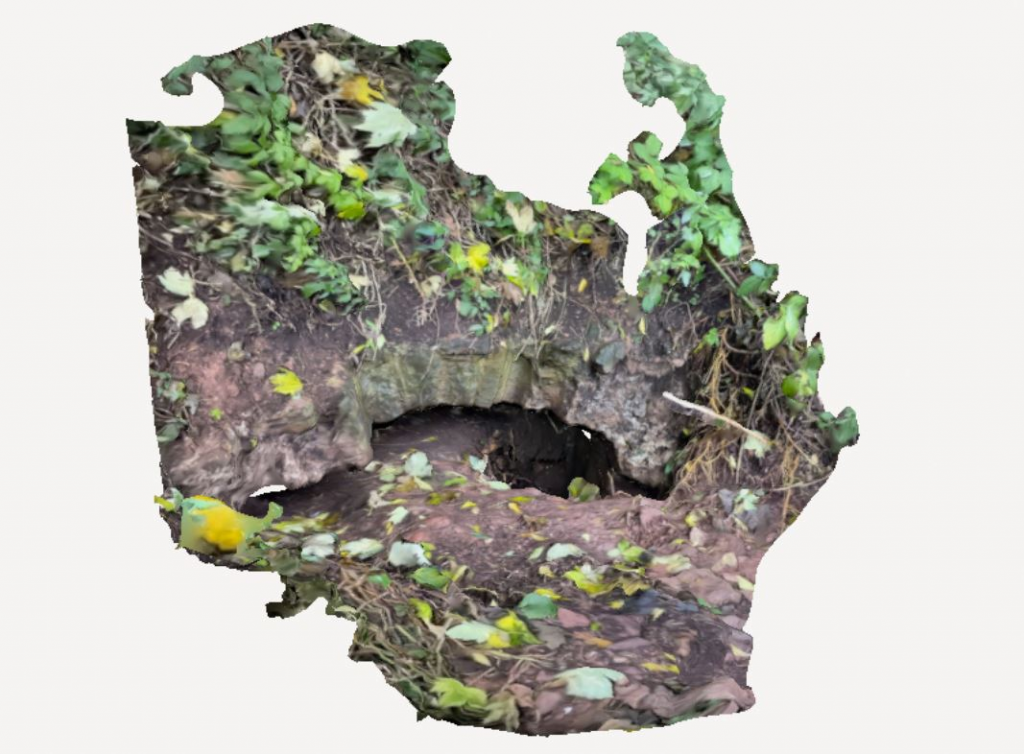
The animal pond survived the construction of Lawrence Weston estate around it, and is shown on aerial photos from 1950, glinting behind the houses of Moor Grove. No doubt this posed a health and safety risk to the new residents of the area, and it is reputed to have flooded downhill in wet weather, into the gardens of new houses. It would have been a practical necessity to infill the pond, and it’s likely that the spring or well head was dealt with at the same time, with the arch partially destroyed to enable its infilling with rubble. Whilst it wasn’t the imagined grotto or ornamental feature that it might have been the cistern is interesting, nevertheless. Its importance to the agricultural estates justifies its marking on the 1772 plan, and the relationship with the livestock pond shows how the opportunities were harnessed.
